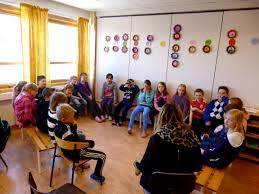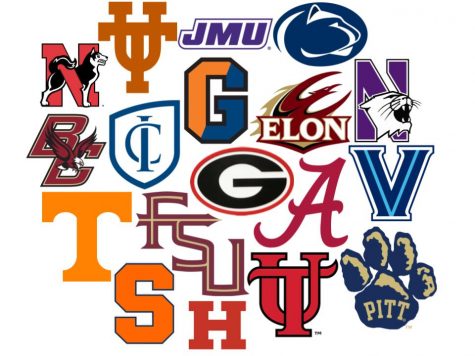The American School System Has A Lot To Learn

A typical Norwegian public school classroom. These students are in Barneskole.
It used to be that having straight-A’s was an exceptional achievement, but today, an A-average is touted as the norm. A 2016 College Board report found that since 1998, the number of SAT-takers with an A average has risen from 39 percent to 47 percent, though the average scores themselves have declined. Because standards are sky-high, students often feel inadequate and this can lead to a poor self-image and unrealistic ideas of success. These feelings begin in middle school, where competition among classmates begins in earnest and continues on into high school and college. A 2017 American Psychological Association study found that 61% of college students seeking an appointment with a counselor reported feelings of anxiety. Take this with the national mean student-to-counselor ratio of 1,737:1 and there is a huge gap between the students who need help and those who are qualified to give it.
Stress comes from many places, from parents, friends, and school to name a few. An NYU study found that 49% of high school students felt a great deal of stress each day.
At what point does the stress from school outweigh the expectation to perform? Itis common for high achieving students to “burn out” and stop caring about their grades. American school systems should place focus on the process and value of learning instead of facts and general knowledge as these pieces of information will be relatively useless in the workforce. About 95% of what students learn in school they do not remember. It is common practice to memorize basic information for the test and then to forget it. If students love to learn and have developed strong work ethics, they are more likely to succeed. In order to reform the American school system, both schools and the government should look to countries like Norway. In Norway, the education system is made up of primary school (Barneskole), lower secondary school (Ungdomsskole), and upper secondary school (Videregående skole). School is compulsory for students between the ages of 6 and 16, and there is an optional daycare for children ages 1 to 5. Barneskole corresponds to grades 1-7 in the American system. However, students in Barneskole receive no official grades from their teachers. This lowers the stress placed on the students and their development as learners and encourages curiosity. After attending Barneskole, Norwegian children continue their education at Ungdomsskole (Grades 8-10 in America). Here they are graded and have to maintain good grades to get into a good upper secondary school or the Videregående skole. Videregående Skole requires three years of optional schooling, though most Norwegian students will enroll to be competitive on the job market. Private Videregående skole are illegal unless they have a religious or pedagogic association. This makes further schooling an option for all Norwegian students, regardless of their incomes. This year, Norway was ranked ninth by the Organisation for Economic Co-operation and Development (OECD) for having one of the best education systems, and consistently placed in the top ten, while the US placed fourteenth.
Clearly, having a system of education based on learning and individual growth of countries like Norway has the potential to outperform the competitive and stress-inducing education system of the United States. In order to achieve better individual and national results, the US should consider serious educational reforms.
(Photo Courtesy of Nicole Ashley)

Lindsey is in the twelfth grade at West Morris Mendham High School. She is currently a member of the Girls' Cross Country Team and the Swim Team and participates...




